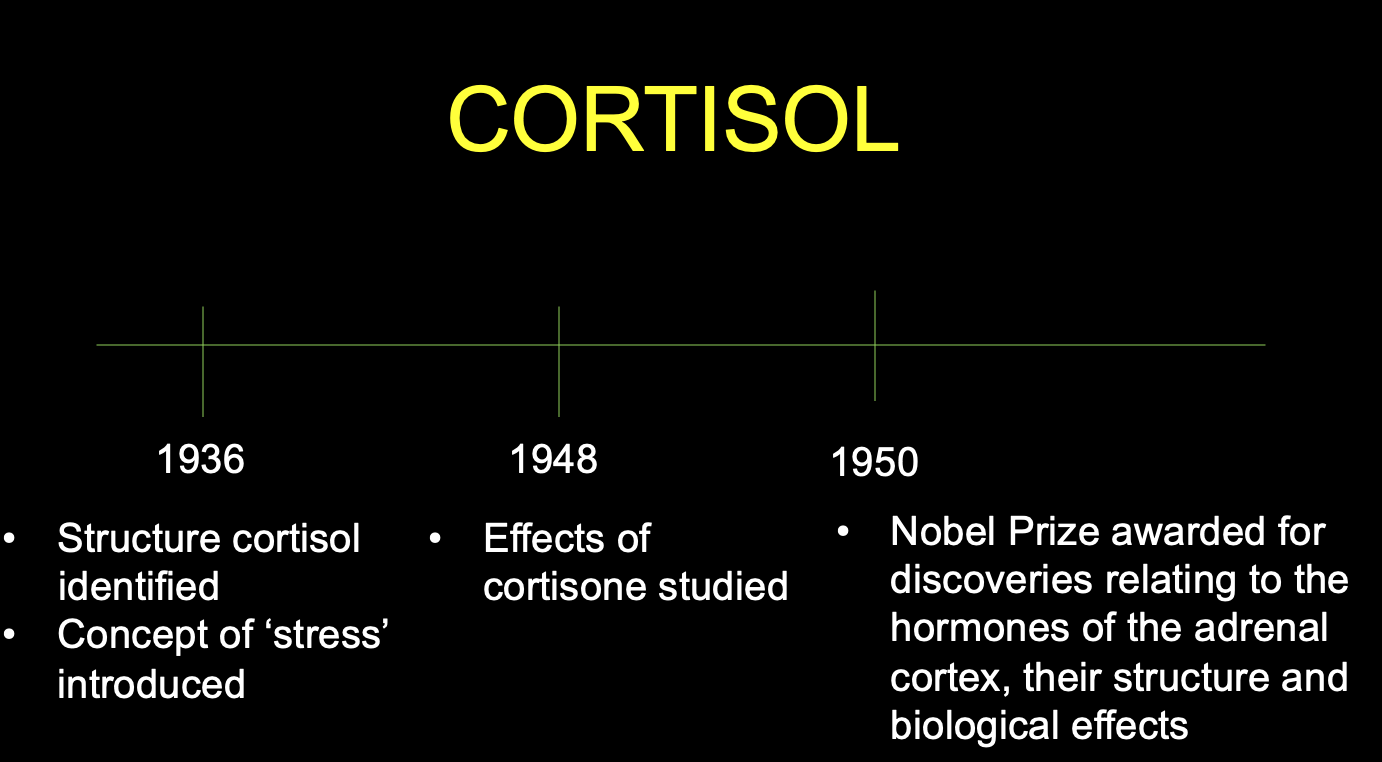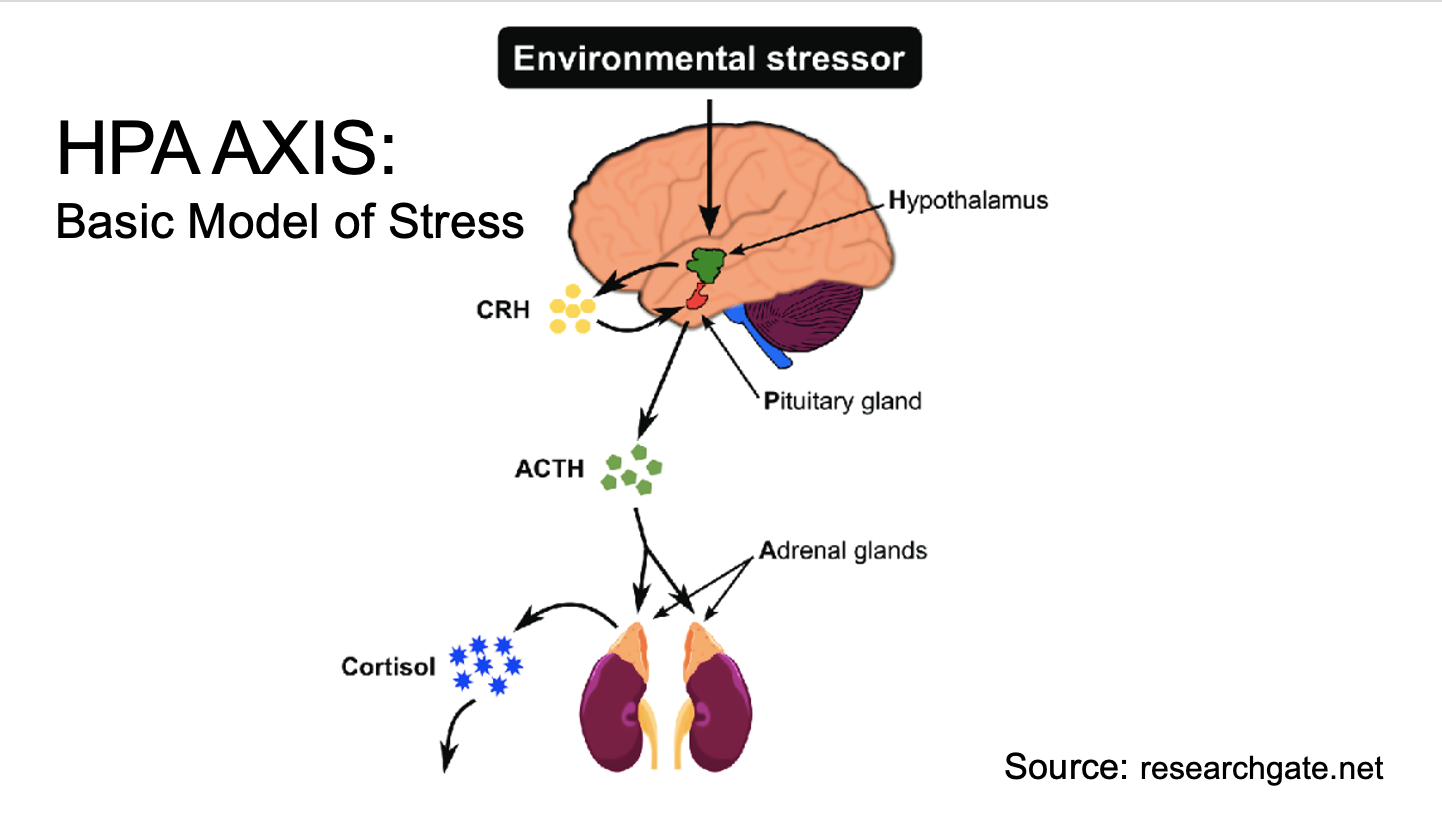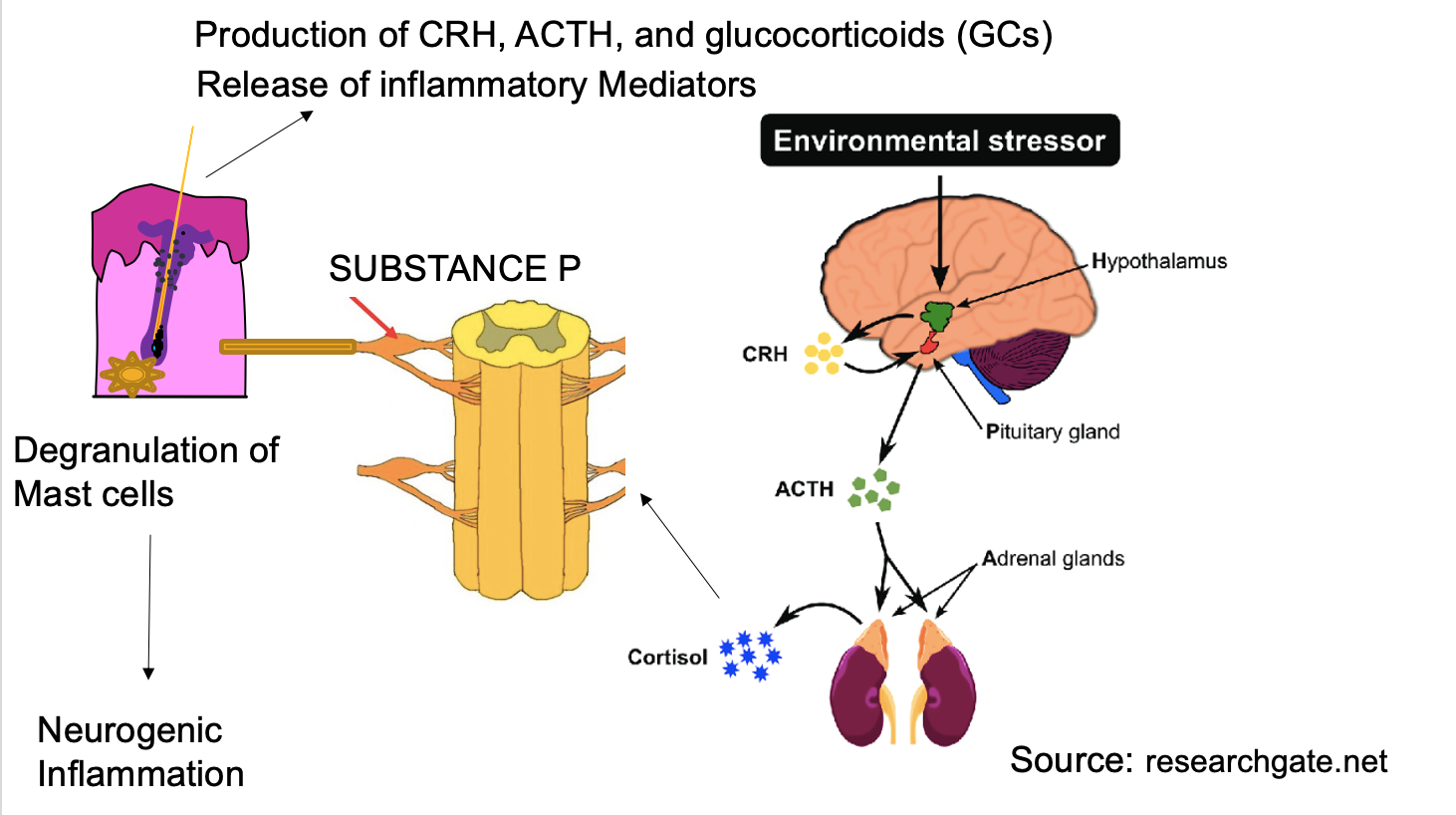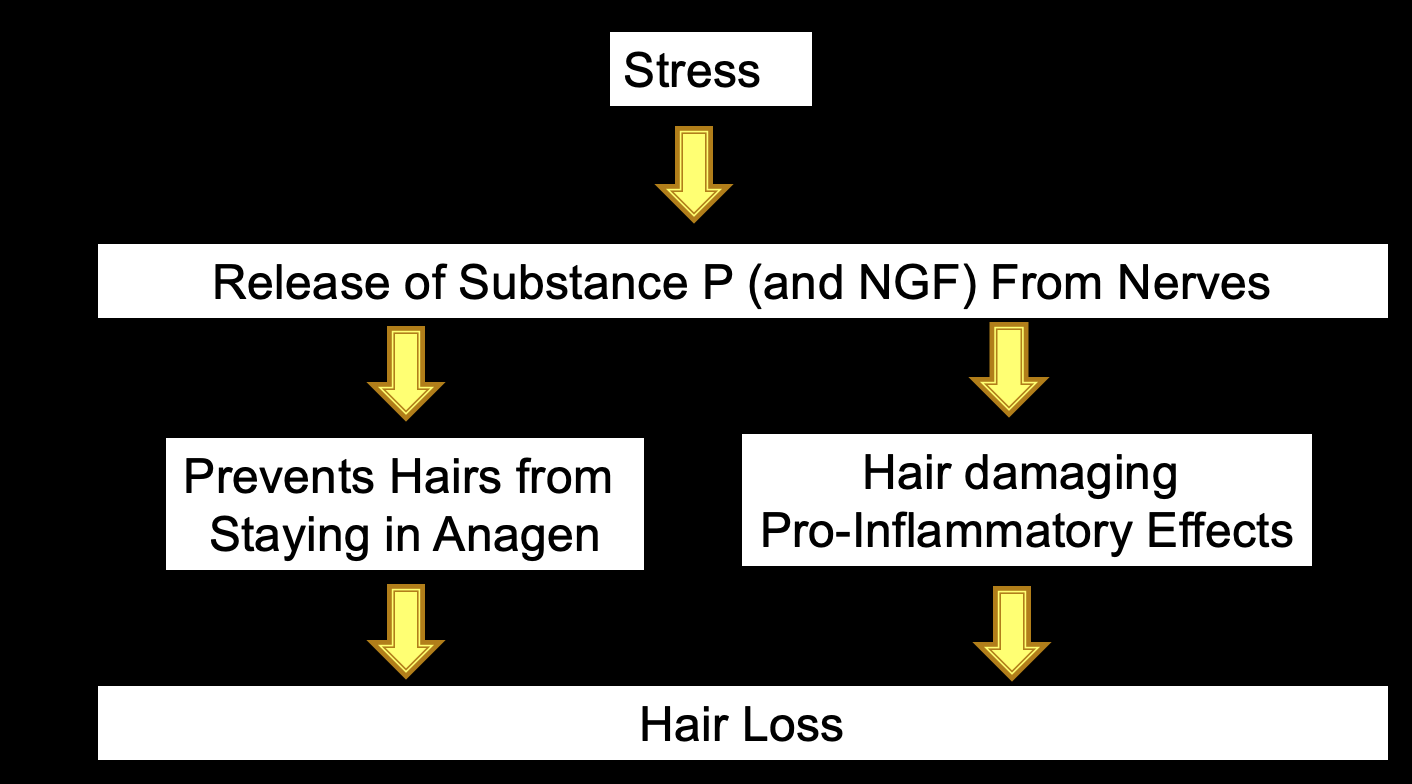Stress and Hair Loss: Is it real? What is the mechanism?
Stress causes hair loss through many complex mechanisms including neurogenic inflammation
I’ve selected this question below for this week’s question of the week. It allows us to discuss the relationship between stress and hair loss.
Here is the question….
QUESTION
I understand that stress can cause telogen effluvium. If that’s true what is the mechanism?
ANSWER
Thanks for the great question. The short answer is that researchers are continuing to put together all the pieces of the puzzle to explain how exactly stress causes hair loss. But yes, stress can cause hair loss.
Below, I’ll review with you some of the key medical and research evidence that helps prove that stress can cause hair loss. You and our readers will come to see that stress ultimately triggers the adrenal gland to produce cortisol which in turn triggers the release of substance P in the spinal column which in turn triggers mast cell degradation in the skin and around hairs. This is the essence of “neurogenic inflammation” and it causes hairs to fall out. When I teach medical student and dermatology trainees about the relationship between stress and hair loss and tell them simply that when they feel stressed and ready to burst - their mast cells are ready to burst as well. It helps them remember this important link.
Let’s delve deeper into this great question
A. CORTISOL
To understand the relationship between stress and hair loss, one needs to understand the hormone cortisol. In 1936, Dr Reichstein identified the structure of cortisol. It was in that exact same year (1936), the concept of stress was first introduced by Dr Hans Selye. Dr Seyle is largely regarded as the ‘father’ of stress research. His experiments on rats in 1936 showed that a stressor often alters many parts of the rat including the adrenal cortex, the immune system, and the gut. Specifically, his studies showed that rats exposed to various nocuous chemical or physical stimuli developed enlarged adrenal glands (a phenomenon called hypertrophy). These rats also had a reduction in the size of their lymph nodes and developed gastric erosions.
In 1950, Reichstein along with two others (Hench and Kendall) were awarded the Nobel Prize in Physiology and Medicine for these discoveries relating to the hormones of the adrenal cortex, their structure and biological effects.
B. THE HPA AXIS
By the mid 1950’s physicians and researchers had developed a very basic understanding of stress. Remarkably the model proposed in the 1950s has stood that test of time right up to the present day. We call this the Hypothalamus- Pituitary – Adrenal axis (HPA axis)
In the presence of stress, a part of the brain known as the hypothalamus triggers to release a hormone called CORTICOTROPIN RELEASING HORMONE or CRH. CRH in turn tells the pituitary gland to synthesize and release a chemical known as Adrenocorticotropin hormone (ACTH). ACTH then enters the blood stream and stimulates the adrenal glands to make cortisol.
B. THE HPA AXIS and Beyond: A New Model of the Skin Endocrine System
For many years after the HPA axis was proposed, the hypothalamus was truly thought to be the ‘ boss’. After all, it made hormones that told other parts of the body what to do. It not only made CRH, but may other hormones too. Soon it was discovered that the skin was able to produce many of its own hormones too including CRH, ACTH and others.
The skin is an endocrine organ unto itself and can produce many different hormones.
From there a whole new model of understanding stress flourished where it was proposed that stress causes an upreegulation of a chemical known as substance P (SP) and calcitonin gene-related peptide (CGRP) in the dorsal root ganglia of the spinal column along with epinephrine and norephineoprhine. This in turn leads to change in the hormone production in the skin and the degranulation of cells in the skin known as mast cells.
It’s this degaulation of mast cells that sets off in the skin a whole new type of inflammation called “neurogenic inflammation.”
C. Is this modern model of stress and the skin really relevant?
It appears that this model linking stress to hair loss is accurate. Studies have shown that when mice and rats are stressed in the lab, there is in increase in cortisol levels and hairs leave the growing phase. This is all associated with an increase in substance P in nerves and degranulation of mast cells. What’s quite remarkable is that effects of stress on the skin and hair of mice and rats can be blocked by administering antibodies to substance P to block the effects of substance P. It appears substance P in nerves is really important to how stress affects the skin and hair.
The modern model relating stress and hair loss is therefore :
D. Stress and Humans: What research suggests stress causes or contributes to hair loss in humans
A number of studies in human have linked stress to hair loss.
Study 1: Bin Saif et al 2018
A 2018 study by bin Saif evaluated 529 medical students to evaluate how dermatologic conditions differ among students who are the least stressed, moderately stressed and highly stressed. Compared to the least stressed students, highly stressed medical students reported:
a) More hair loss
b) More flakes on the scalp
c) More itchy skin
d) More trichotillomania
d) More warts
Study 2: Rebora et al 2017
Rebora published a nice study in 2017 showing thee development of shedding in a patient every time the patient was stressed. When stress went down, the shedding went down. When stress increased again, shedding increased again.
E. Stress in other hair loss conditions
Your question relates to telogen effluvium so I’ll limit the discussion to TE. However, it should be noted that stress probably has a role in several hair conditions including alopecia Areata, lichen planopilaris, and others. It may not be the direct cause of course, but neurogenic inflammation appears to contribute to immune system dysregulation.
Summary and Conclusion
Thank you again for the great question. I hope you can see that the question is mighty complex but we’re developing remarkable new understand as the years go by. It appears that neurogenic inflammation is a key mechanism by which stress causes hair loss. Furthermore, it appears that mast cells are important in this whole process.
References
Arck PC et al. Indications for a 'brain-hair follicle axis (BHA)': inhibition of keratinocyte proliferation and up-regulation of keratinocyte apoptosis in telogen hair follicles by stress and substance P. FASEB J. 2001 Nov;15(13):2536-8. Epub2001 Sep 17.
Bin Saif GA et al. Association of psychological stress with skin symptoms among medical students.LSaudi Med J. 2018 Jan;39(1):59-66. doi: 10.15537/smj.2018.1.21231.
Liu et al. Chronic Restraint Stress Inhibits Hair Growth via Substance P Mediated by Reactive Oxygen Species in Mice PLoS One. 2013 Apr 26;8(4):e61574. doi: 10.1371/journal.pone.0061574. Print 2013.
Rebora A. Intermittent Chronic Telogen Effluvium.Skin Appendage Disord. 2017 Mar;3(1):36-38. doi: 10.1159/000455882. Epub2017 Jan 28.






